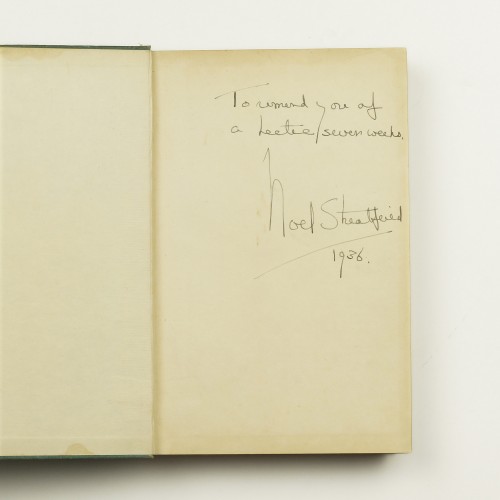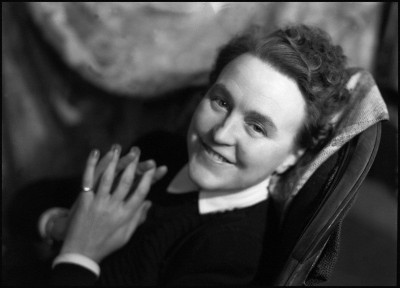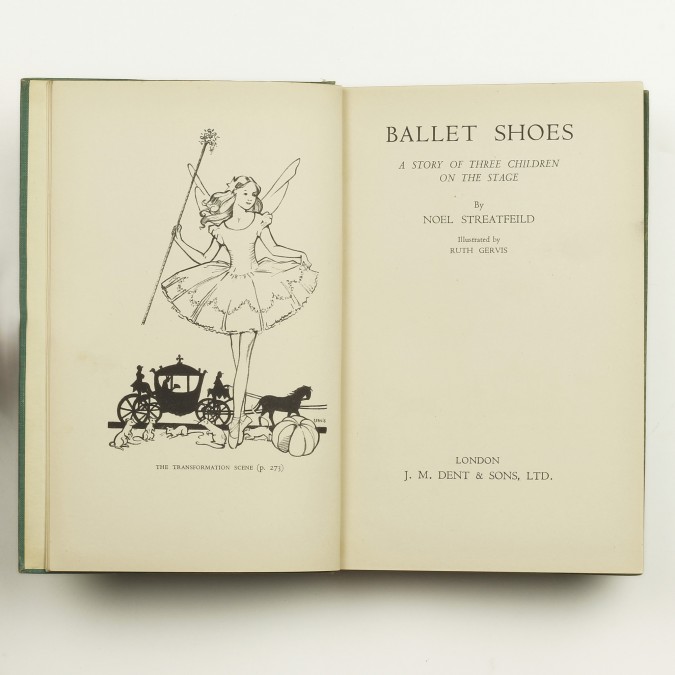"I find that it takes me nearly a year of thinking about my people before I know them well enough to write about them.”
Noel Streatfeild once wrote that to be an outstanding children’s author, the writer should have an “ability to remember with all their senses their own childhood, and what it felt like to be a child”. [Magic and the Magician, 1958]. Born on Christmas Eve 1895, the second child of five children, she became something of a rebel, reacting against her family’s strict parenting with its heavy religious observances and developing a dislike of formal education, getting expelled from her first school and resisting any attempts to teach her anything at her subsequent school. Despite her resistance to authority and her later descriptions of an unhappy childhood, she knew she was at all times in a secure and trustworthy family environment. This belief in family, in its loyalties and customs, the general feeling of “belonging” regardless off any private rebellions or misdeeds, is central to much of Streatfeild’s literature for children.
She decided at an early age that she wanted to become an actress, successfully graduating from the Acadamy of Dramatic Art and joining a touring repertory company playing alongside such luminaries as Ralph Richardson and John Gielgud. Although her love affair with the theatre only lasted for ten years, her experiences provided her with the material for her first children’s novel, Ballet Shoes, published on 28 September 1936. She was originally asked to write a children’s story about the theatre by Mabel Carey, the children’s editor at Dents.
“I’m certain the world is full of children who would enjoy a book about the theatre, preferably about children in the theatre. Couldn’t you write such a book?” Carey asked.
“I’m perfectly certain I couldn’t. I’ve never thought of writing for children.”, responded Streatfeild. (Beyond the Vicarage)
Initially unwilling, she based the tale on her earlier novel for adults The Wicharts, published in 1931, removing the disreputable and disillusioned elements but retaining the idea of unrelated children becoming siblings. Ballet Shoes involves three girls, Pauline, Petrova and Posy, who are all orphans, brought together to create a new family, and follows their hopes, disappointments and achievements as they struggle to succeed on the stage as actresses and ballerinas. To her immense joy, Mabel Carey suggested Ruth Gervais as an illustrator for the book, unaware that Ruth was Noel's sister - the reality of family bonds cannot have been missed by the author!
To the author’s immense surprise Ballet Shoes was an overnight success. "Everybody seemed to be writing about the book and with so much praise ...You'd think I had written the Bible."
Walking down Oxford Street one day Streatfeild passed the window of Bumpus, “probably London’s most famous bookshop… The whole window was full of nothing but her book, Ballet Shoes, which looked very pretty bound in silver and green. Round the window, hung by their ribbons, were ballet shoes with at the top shoes belonging to Karsavina (the Russian prima ballerina).” (Streatfeild’s authobiography)
In Selfridges Ballet Shoes was given its own department, with customers limited to one copy each, although after some persuasion the author was permitted to purchase two copies.
The immediate popularity of the book can certainly be ascribed to the resurgence of ballet as an entertainment, with thousands of little girls going to ballet lessons every week, each able to identify themselves with Posy Fossil and her aspirations to be a prima ballerina. However Streatfeild’s approach to story-telling is also a major contributing factor – she allows the girls to be “real”, even a little mean or petty sometimes, but above all they have a tremendous sense of togetherness and unity.
 (Noel Streatfeild's inscription in a first edition of Ballet Shoes)
(Noel Streatfeild's inscription in a first edition of Ballet Shoes)
Noel Streatfeild went on to write further books in the Shoe series, plus many other stories for children but it is for Ballet Shoes that she is most fondly remembered. In 1948 The Library Association listed it as one of a number of "books which should always be in print".
"We three Fossils vow to try and put our name in the history books because it is our very own." This vow made by Posy, Petrova and Pauline Fossil on their birthdays now seems almost prophetic.
We have recently purchased a small collection of books from the library of Claude Orr, who was both a close friend of Noel Streatfeild’s and proof reader of her books. Included in the collection is the rare first edition of Ballet Shoes, plus adult novels, biography and plays. More details of Noel Streatfeild's books can be seen here.
Comments
Recent Posts
- The Evolution of Crime
- Tour The Bookshop On Your Screen
- The Genesis of Mr. Toad: A Short Publication History of The Wind In The Willows
- Frank Hurley's 'South'
- The "Other" Florence Harrison
- Picturing Enid Blyton
- Advent Calendar of Illustration 2020
- Depicting Jeeves and Wooster
- Evelyn Waugh Reviews Nancy Mitford
- The Envelope Booklets of T.N. Foulis
- "To Die Like English Gentlemen"
- Kay Nielsen's Fantasy World
- A Brief Look at Woodcut Illustration
- The Wealth Of Nations by Adam Smith
- What Big Stories You Have: Brothers Grimm
- Shackleton's Antarctic Career
- Inspiring Errol Le Cain's Fantasy Artwork
- Charlie & The Great Glass Elevator
- Firsts London - An Audio Tour Of Our Booth
- Jessie M. King's Poetic Art, Books & Jewellery
Blog Archive
- January 2024 (1)
- January 2023 (1)
- August 2022 (1)
- January 2022 (1)
- February 2021 (1)
- January 2021 (1)
- December 2020 (1)
- August 2020 (1)
- July 2020 (2)
- March 2020 (3)
- February 2020 (2)
- October 2019 (2)
- July 2019 (2)
- May 2019 (1)
- April 2019 (1)
- March 2019 (2)
- February 2019 (1)
- December 2018 (1)
- November 2018 (1)
- October 2018 (2)


Rosemary Gravestock 05/Dec/2020 11:02
This has been such an enlightening read I’m very enthusiastic to catch up on reading Noel Streatfield’s children’s collection, starting g off with Ballet shoes, thank you.
melodyann clifton 17/Apr/2014 00:08
I found your information extremely helpful,as I am going to school for writing children's books! I read these books by Noel Streatfield to my daughter 23 years ago.....thanks for the terrific synopsis
andrea ban 13/Mar/2014 16:17
I love Ballet Shoes:) And I've collected most of Noel Streatfield's books. Found it by chance during one holiday in Singapore. Such a lucky find!!